فاس
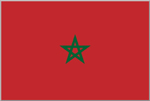
Not just a hat rack

Former historic capital of Morocco, Fes (or Fez) remains an important city in the north of the country, with what is likely the world’s largest walled-in medina. The city was founded in 789 and also hosts one of the world’s oldest continuously operating universities. Besides its obvious millinery pedigree, Fes is well known for the traditional leather tanneries still operating as they have for centuries.
Fes was our first overnight stop on our tour of Morocco in 2003, we arrived by train from Tangier and stayed in a suitably cheap hotel just outside the medina. We booked a well-dressed local guide to show us about, and just as well because the medina is easily the largest and most confusing labyrinth I’ve ever set foot in. It also appeared mostly untainted by modern technology, with vendors everywhere still using traditional techniques for woodworking, metal bashing and pottery. Definitely the most Indiana Jones-type city I’ve been to, and far more authentic than sanitised Marrakech. And yes, of course, I bought a fez.
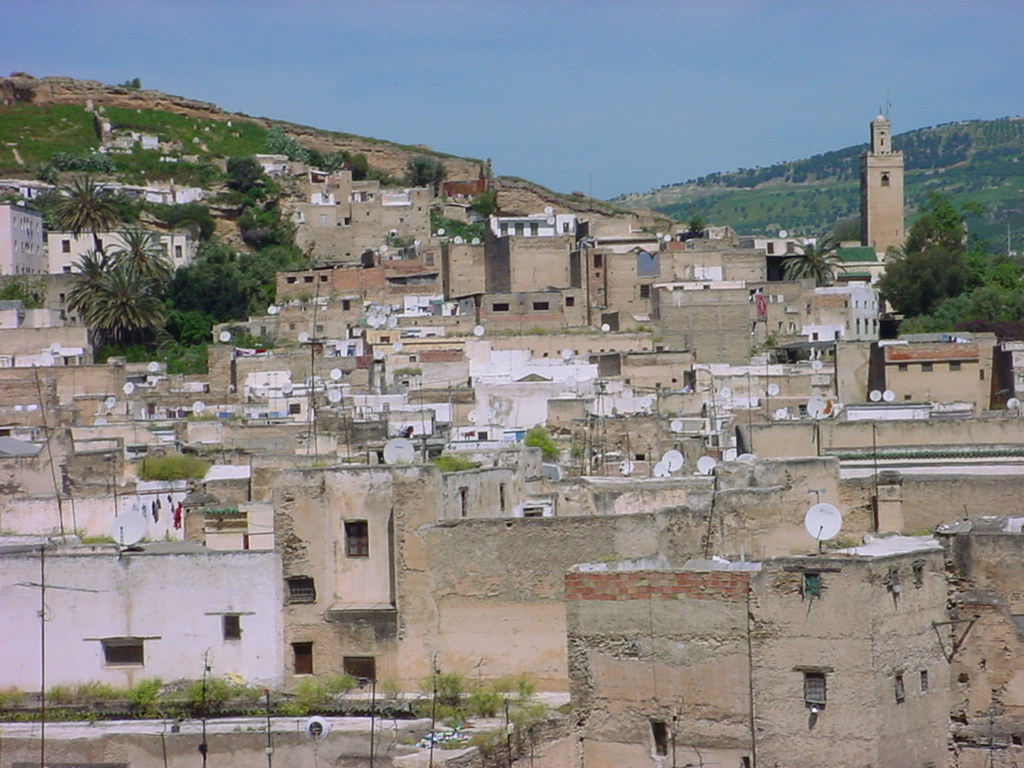
View across the old medina, Fes el-Bali. Although it was springtime, I was still surprised at how green the surrounding area was.
The Royal Palace of Fes, Dar al-Makhzen is the residence of the King of Morocco when he should happen to be in town. Although dating back to the 1200s, these gates are from the 20th century and constitute a significant portion of the publicly visible palace.

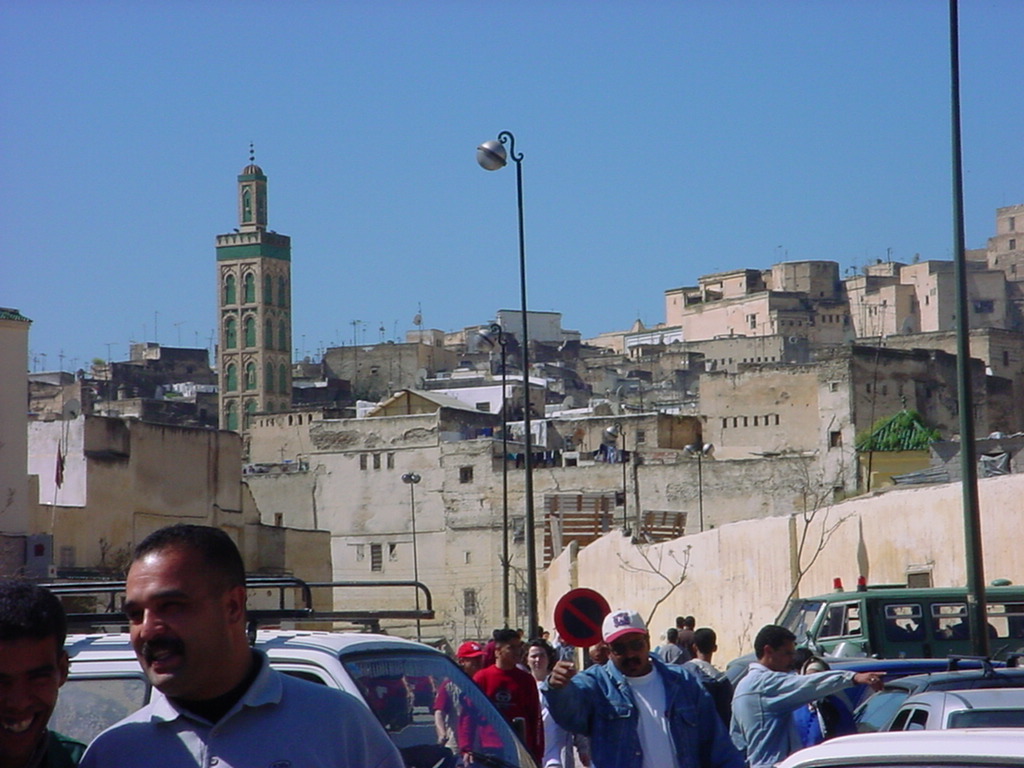
Moving down to the medina proper and things were getting much busier. During my 2023 research it took a lot of effort to figure out that the green minaret is the Zawiya (tomb) of Sidi Abdelkader al-Fassi, dating from the 17th century.
Entering into another world as we stepped through the Moorish gate and into the sea of people that throng the narrow passageways of Fes.
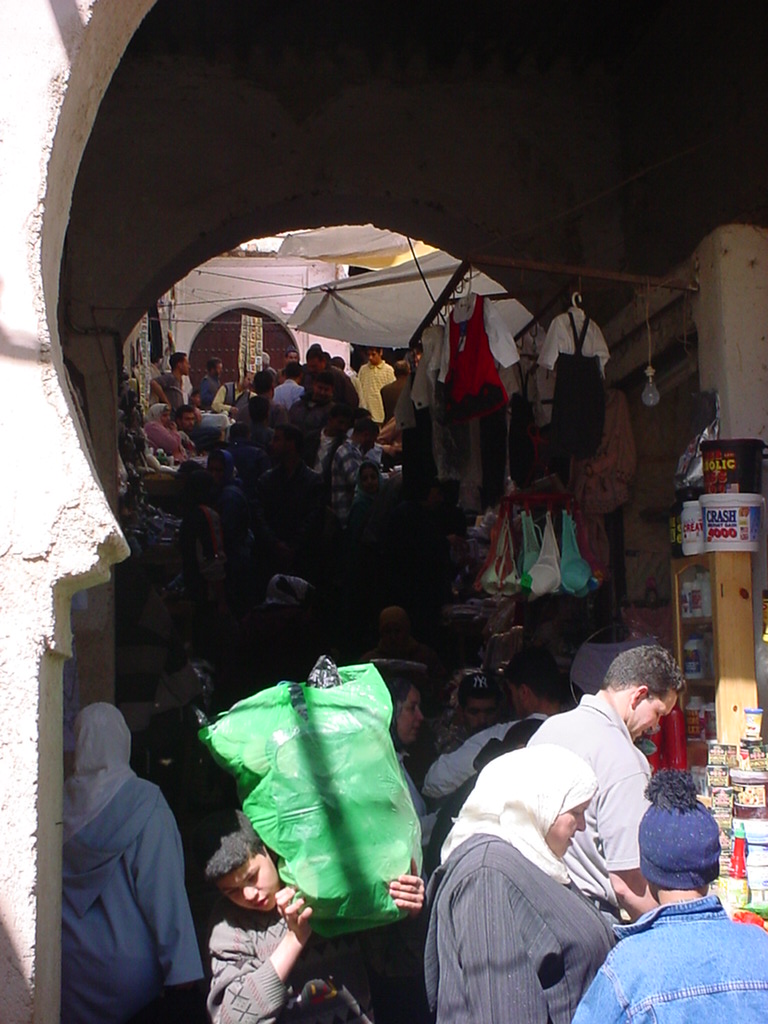
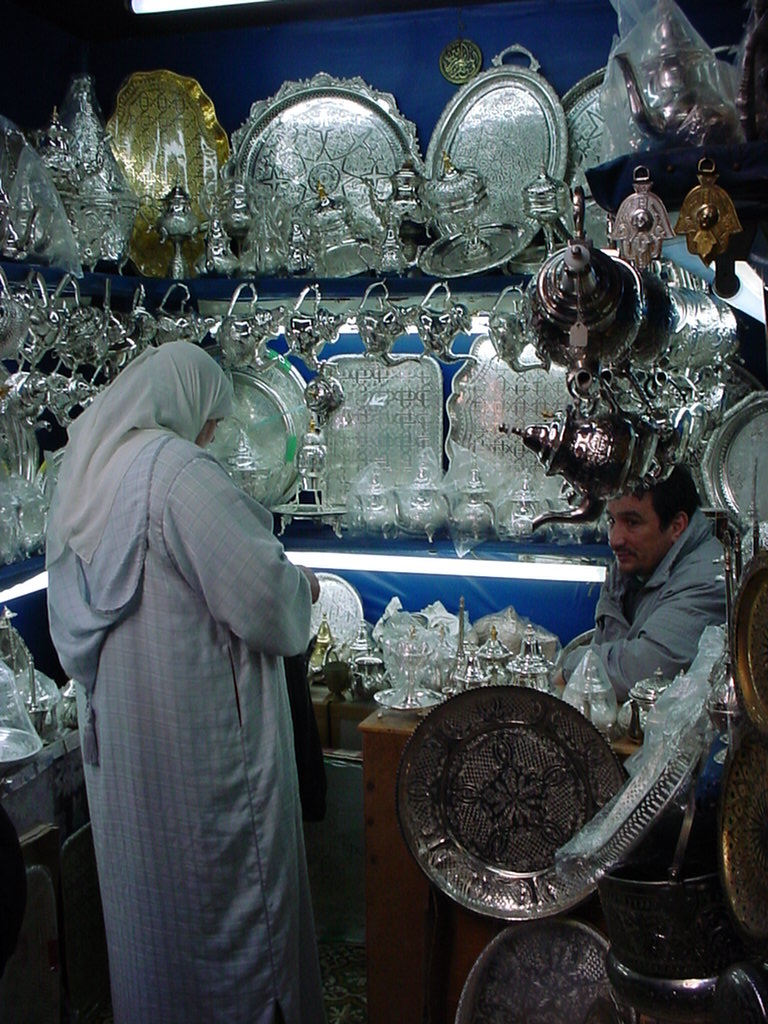
A local lady checks out the silverware at a metalworking merchant’s shop.
The tannery at Chouara is one of the main attractions of Fes, the largest and one of the oldest of the three that still operate, dating back to not long after the founding of the city in the 9th century. The techniques aren’t much changed since then, although after my visit some pollution controls were brought in to improve the condition of the nearby Fes river.
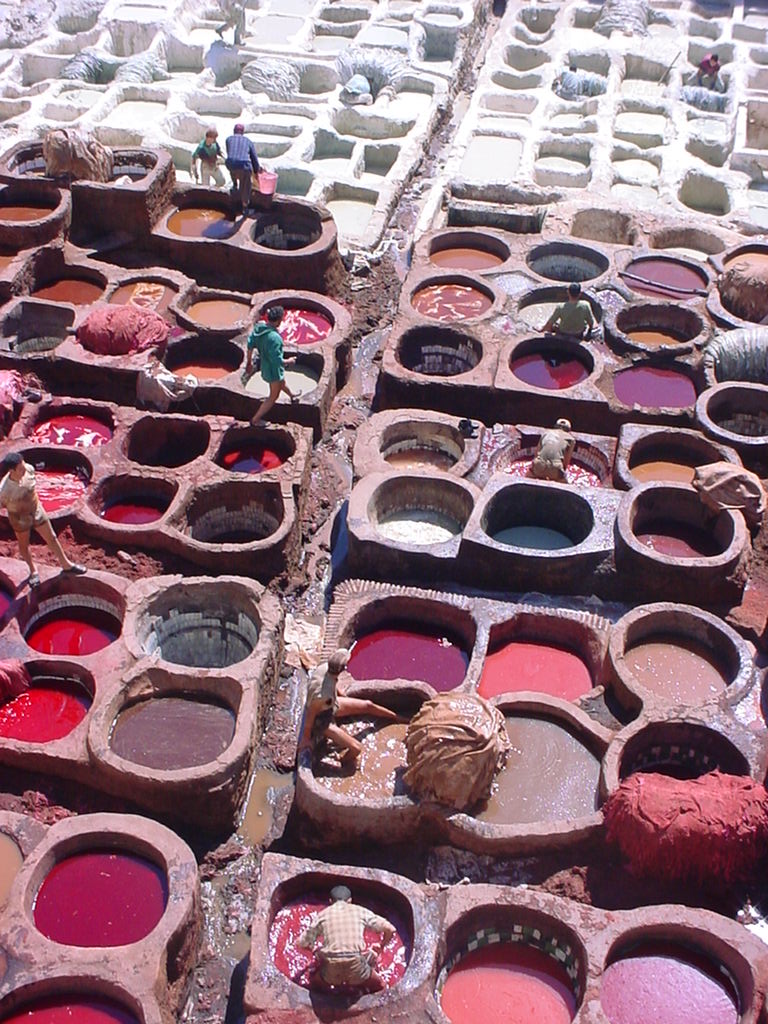
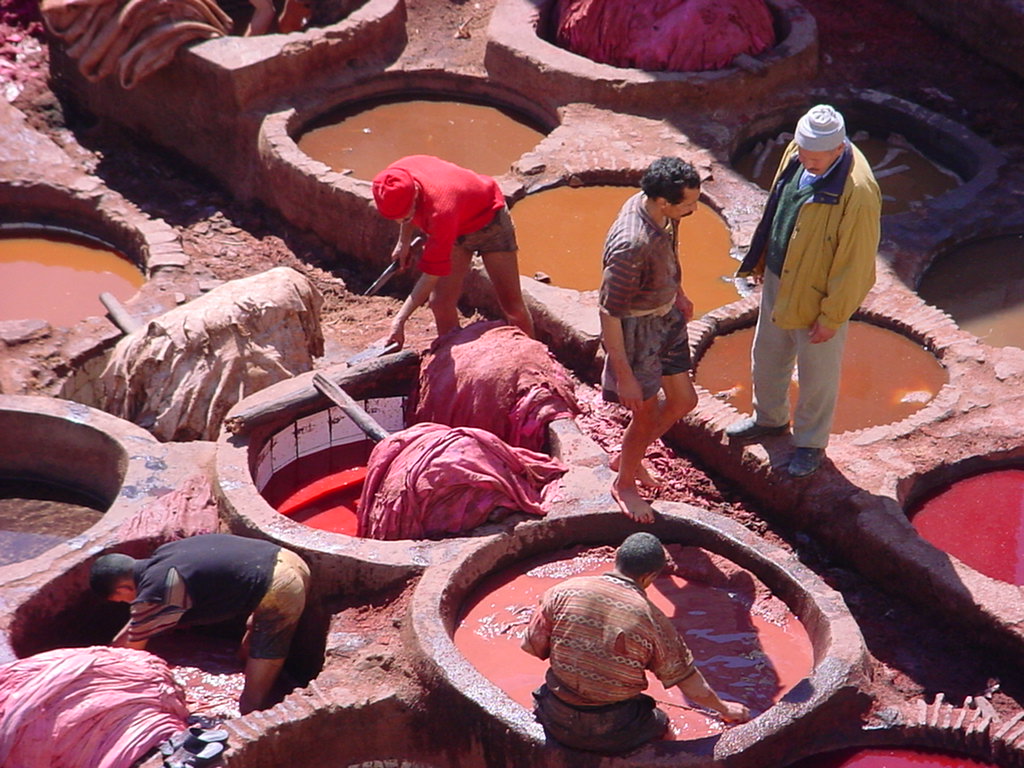
Detail of the workers slogging away with their leathery hides under the relentless Moroccan sun. The animal skins take a beating, too.
The white pots are used for softening the hides of assorted livestock first, with such ingredients as pigeon droppings and cattle urine contributing to the unique aroma of the establishment. The dying is carried out in the darker vats with more palatable ingredients including henna and indigo, before drying in the sun as can be seen on the surrounding flat rooftops.
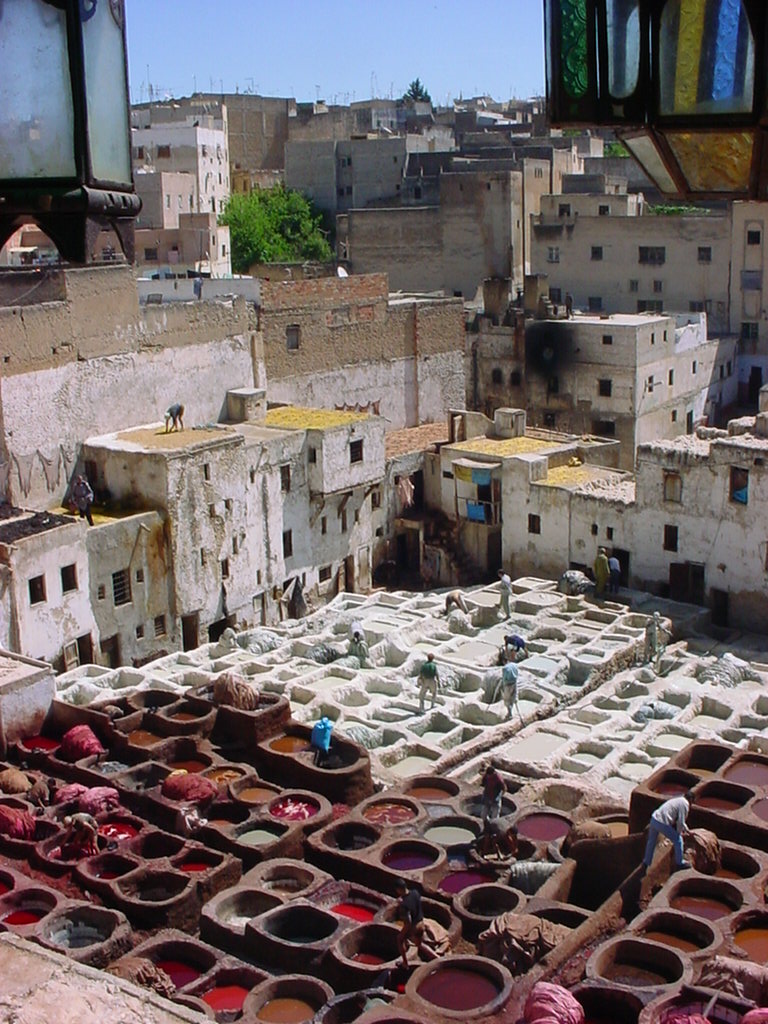
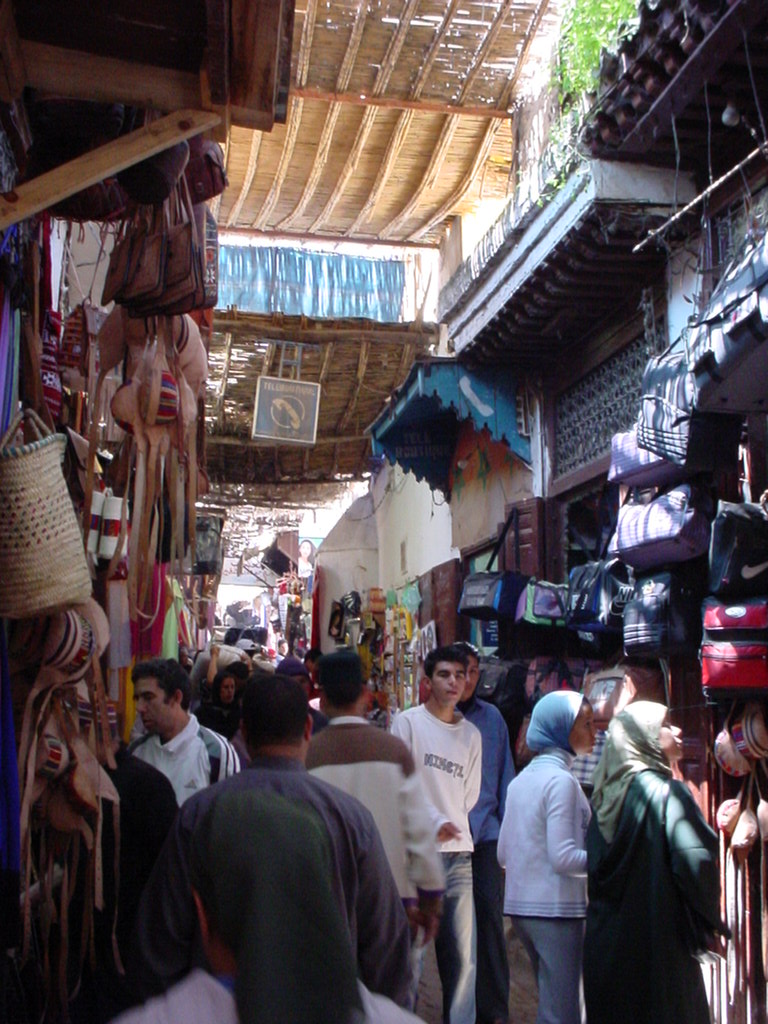
Back into the medina and we battled our way through the flows of humanity to our next stop.
It’s not possible to visit Morocco without someone trying to sell you something, and it’s not possible to visit Fes without that something being a quality hand-crafted carpet. The sugary tea we were served made the whole experience quite enjoyable as carpet after carpet was laid out for our delight – of course we couldn’t afford to buy any, but it was nice to see, and the hawker didn’t seem to have anything else going on.
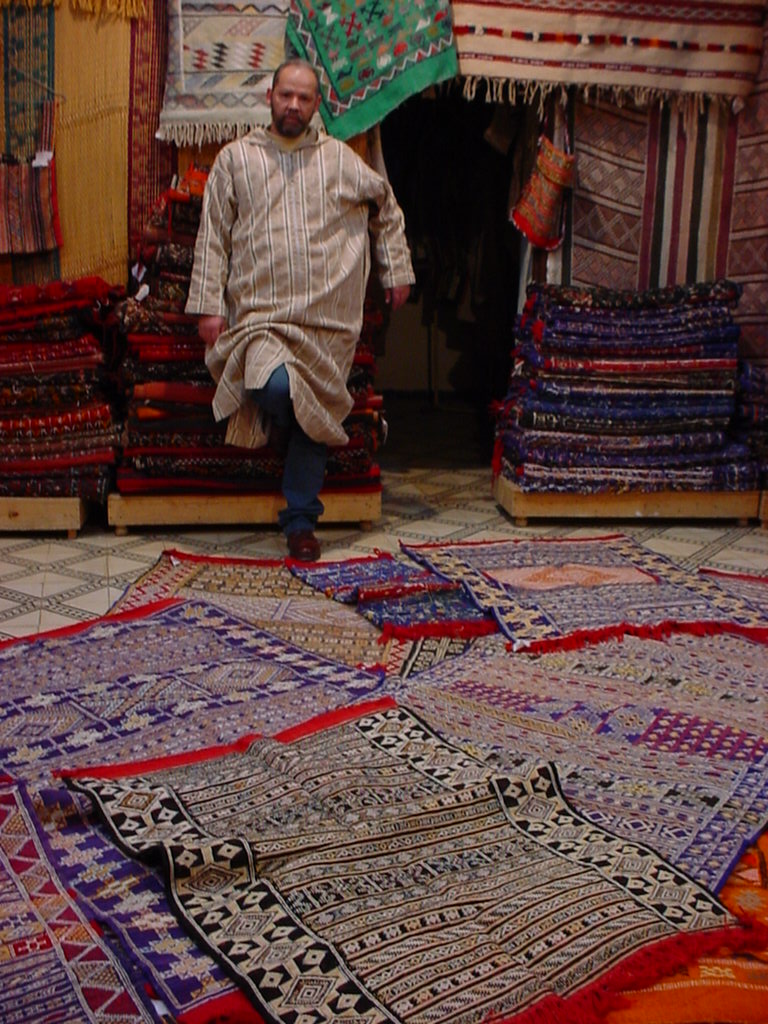
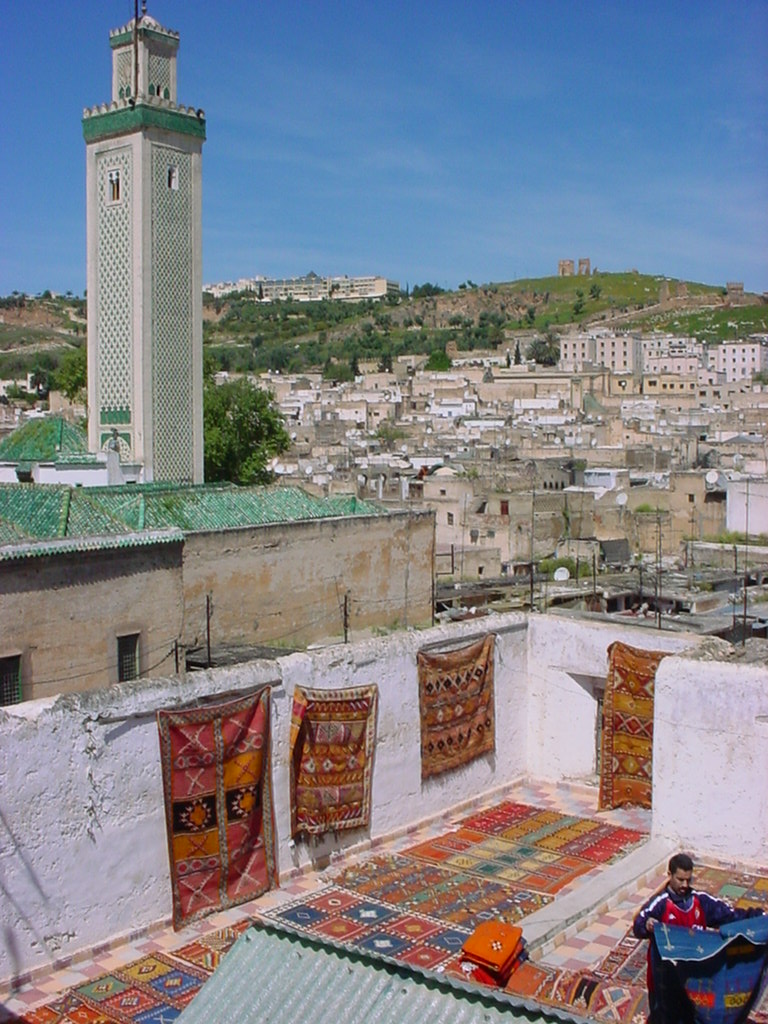
Fes el-Bali as viewed from the top of the same carpet shop. The minaret of the Zawiya (mausoleum) of Moulay Idris II stands tall, and contains the tomb of Idris II who ruled Morocco until 828 and also consolidated the founding of Fes along the way. The arches on the far hilltop are the Marinid Tombs, last resting place of royals from around 1200-1400.
A beautiful tiled archway and street fountain mark the entrance to the Nejjarine Museum, a repository of wooden arts and crafts from around Morocco.

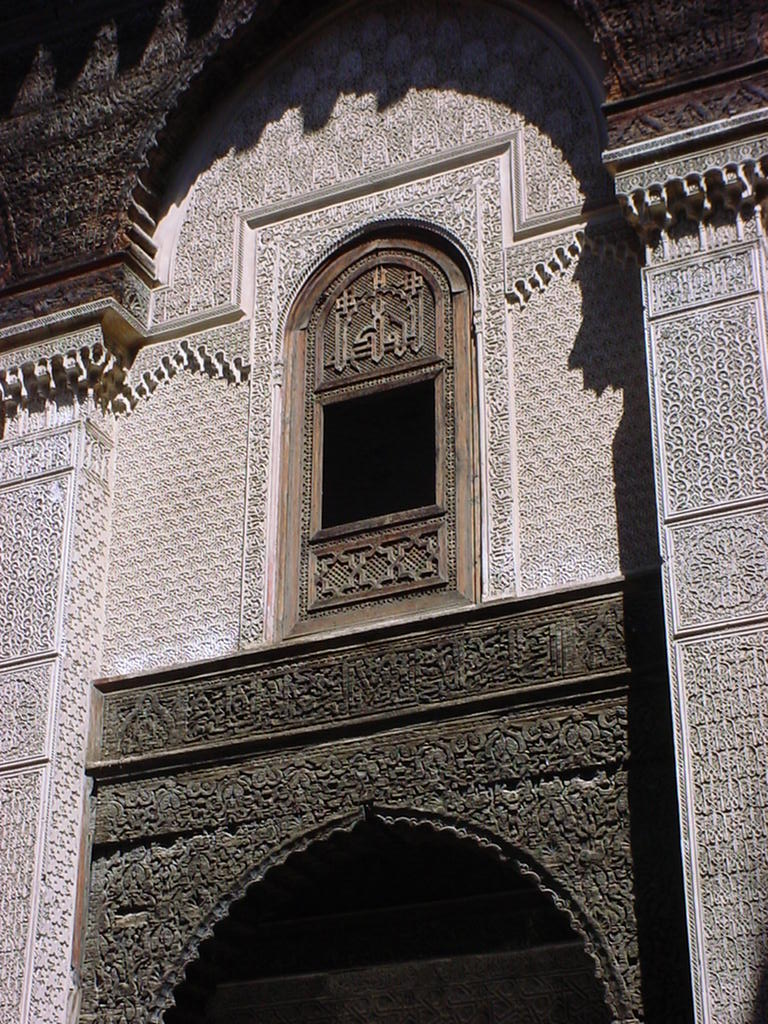
Moorish horseshoe arches are the architectural order of the day at the University of al-Qarawiyyin, reputedly the world’s oldest having been founded in the year 857. These days it has expanded to host over 8,000 students – this section is the associated mosque.
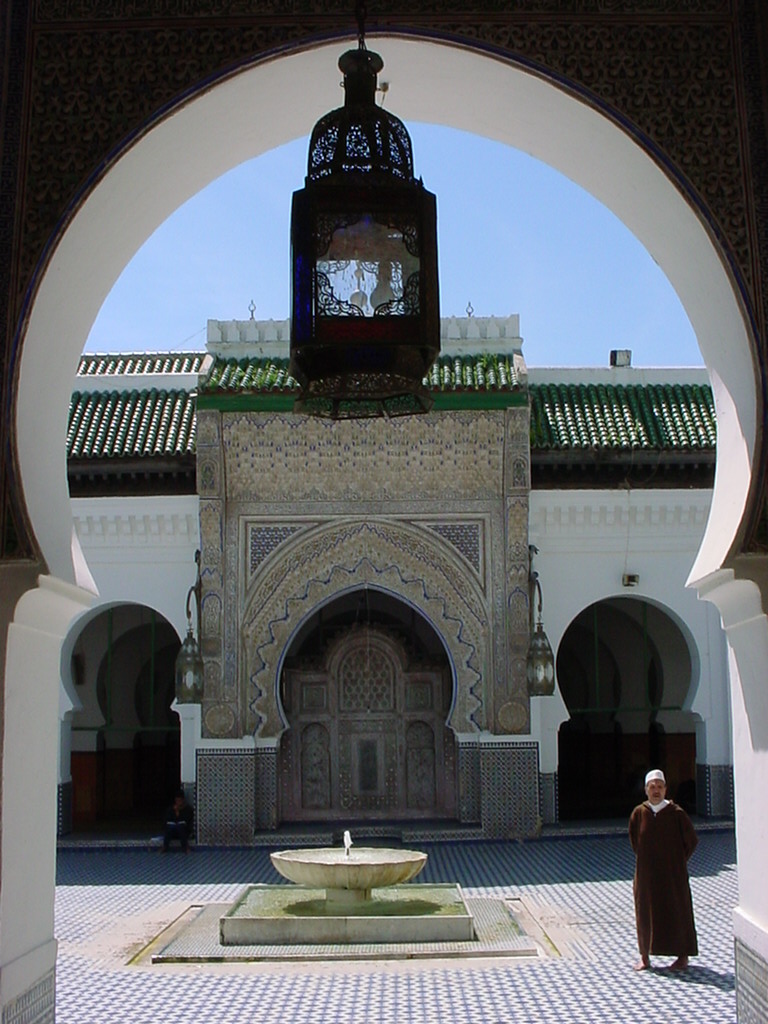
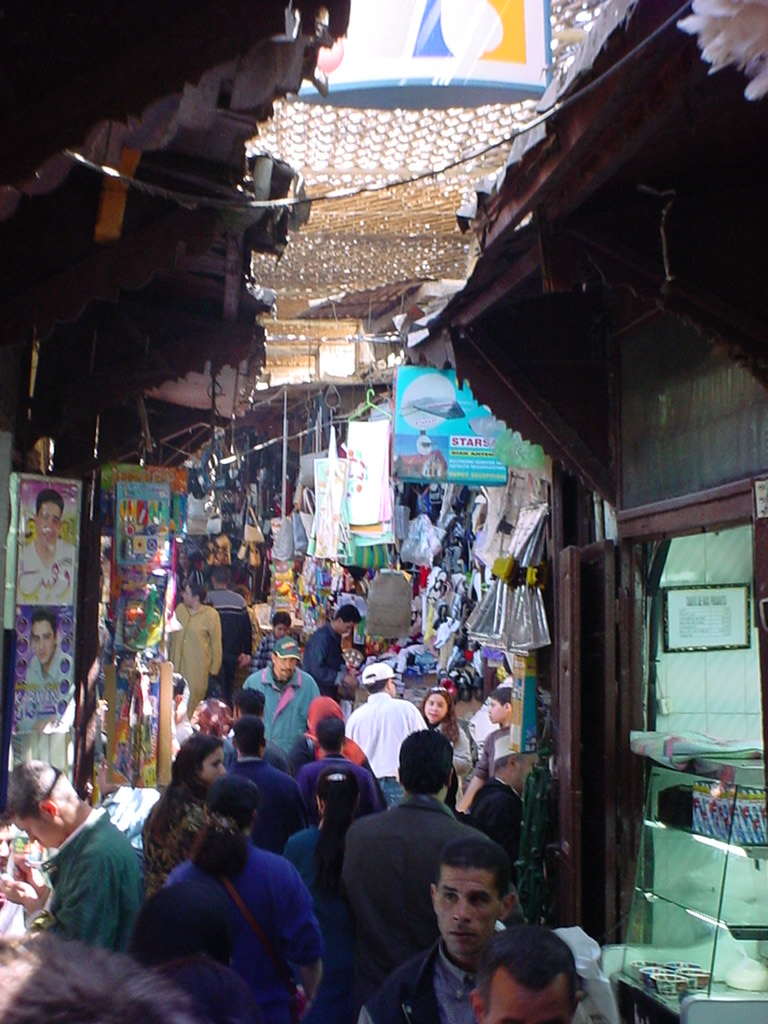
Into the crush of the medina again, this section appears to be selling all manner of traditional Moroccan plastic products.
Things quietened down after dark, however despite my best research efforts twenty years later, I’m unable to figure out where these archways were.
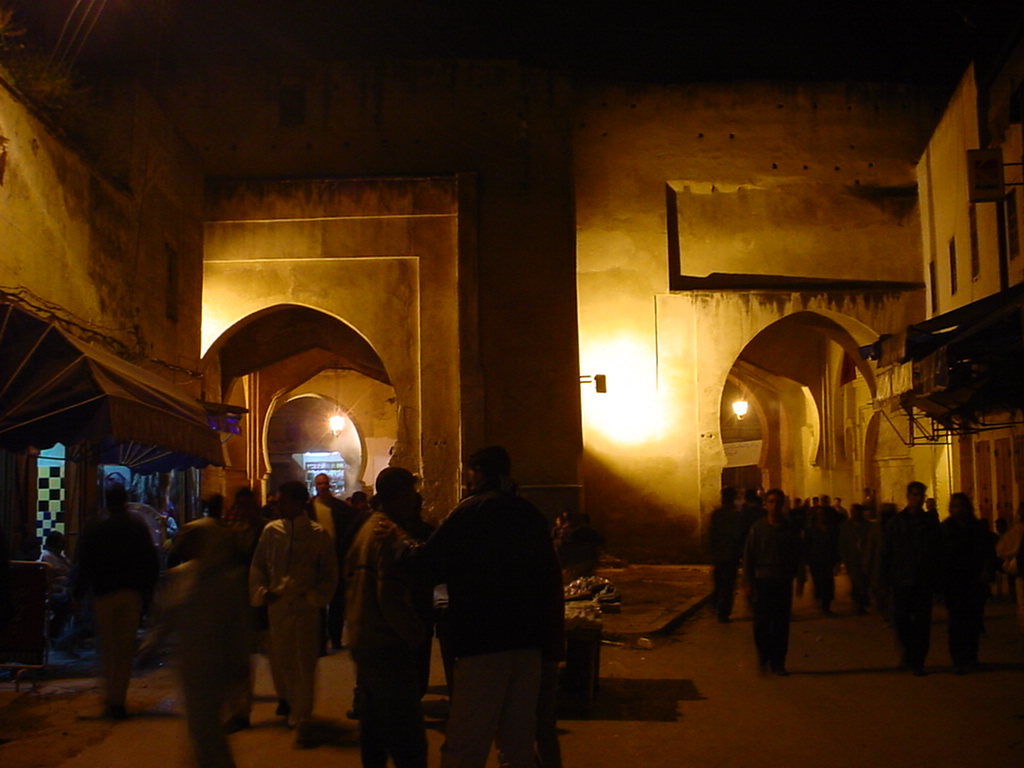

One of the city gates. The old walled city’s fortified gates took on a more ceremonial role from the 20th century, with some being reconstructed in a highly decorative fashion such as this example.
Modern gateways to the Royal Palace as seen after dark.

Created 2003 | Updated 2023
